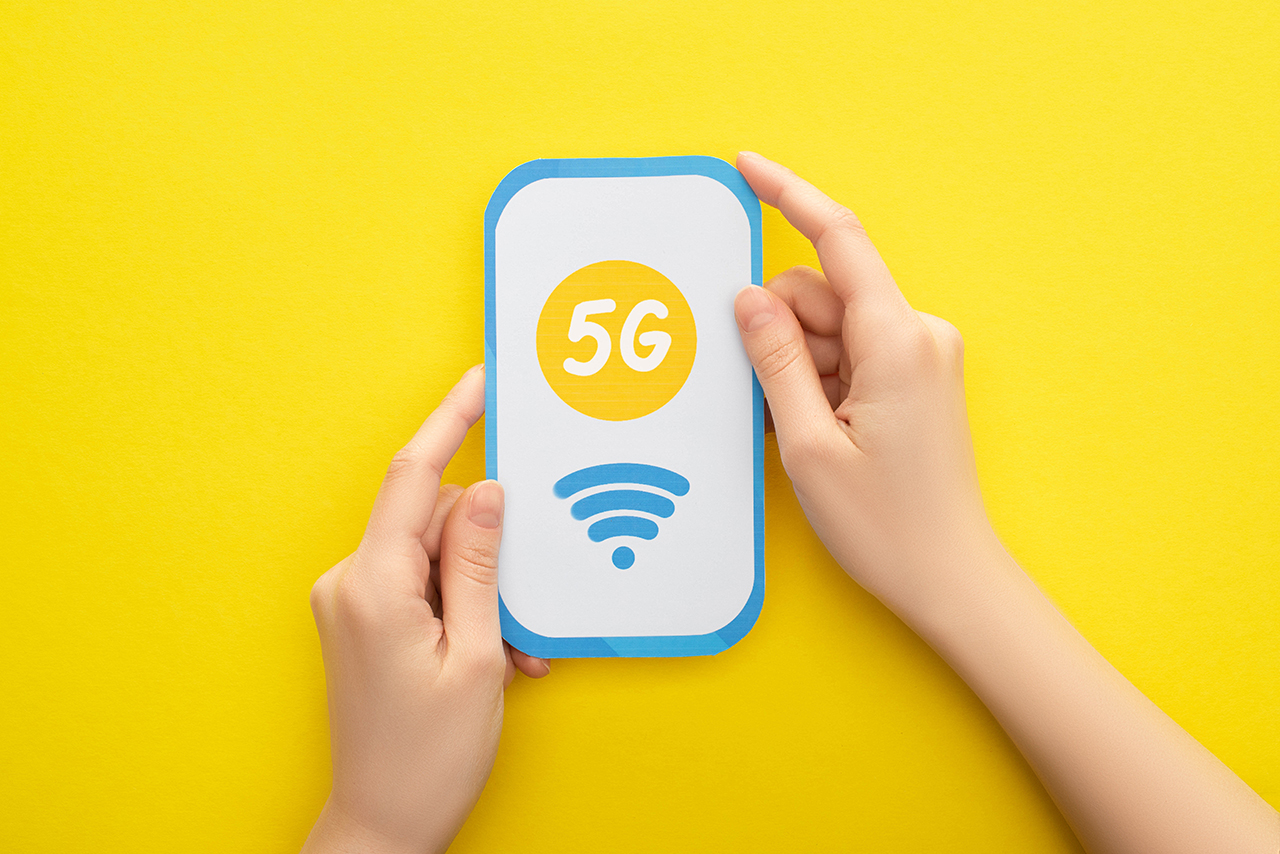In the ever-evolving world of technology, the introduction of 5G stands as a monumental leap forward, promising to redefine the internet and communication as we know it. This fifth generation of wireless technology is not just an incremental upgrade over its predecessor, 4G; it is a radical transformation that brings unprecedented speed, lower latency, and the ability to connect a massive number of devices simultaneously. This article delves into the essence of 5G, exploring its technological advancements, potential applications, challenges, and its profound impact on various sectors, from telecommunications to healthcare, and beyond.
Understanding 5G: The Basics
5G technology is designed to meet the exponentially growing demand for data and connectivity in today's digital era. It operates across three main bands of the spectrum: low, mid, and high-band frequencies, each offering a balance between speed, coverage, and penetration.
The high-band spectrum, also known as millimeter waves (mmWave), can deliver speeds up to 20 Gbps and beyond, but with limited range and building penetration. Mid-band offers a middle ground with good coverage and faster speeds, while low-band spectrum provides extensive coverage but at lower speeds.
Key Features of 5G
- High-Speed Connectivity: 5G promises to deliver data speeds up to 100 times faster than 4G, enabling users to download movies, stream high-resolution video, and enjoy seamless online gaming experiences with virtually no lag.
- Ultra-Low Latency: With a latency reduction to as low as 1 millisecond, 5G dramatically reduces the time it takes for devices to communicate with each other, crucial for real-time applications like autonomous driving and telemedicine.
- Massive Device Connectivity: 5G can support up to a million devices per square kilometer, a significant upgrade over 4G. This capability is vital for the Internet of Things (IoT), where a myriad of devices needs to be interconnected.
Transforming Industries and Societies
Telecommunications
The 5G revolution is set to transform the telecommunications industry by providing more reliable, faster, and high-capacity networks. This will not only enhance mobile broadband services but also enable operators to offer new services such as network slicing, where operators can create multiple virtual networks with different characteristics over a single physical infrastructure.
Healthcare
5G's ultra-reliable low-latency communication (URLLC) is a game-changer for the healthcare sector. It enables remote surgeries, real-time monitoring of patients, and the transmission of large medical images. The result is improved access to healthcare services, particularly in underserved areas, and advancements in medical research and treatments.
Smart Cities
Smart cities stand to benefit significantly from 5G. Enhanced connectivity will drive the implementation of smart infrastructure, from intelligent traffic management systems to energy-efficient buildings. 5G will facilitate the collection and analysis of data in real-time, leading to more efficient city services, reduced environmental impact, and improved urban living conditions.
Automotive and Transportation
The automotive sector will see transformative changes with the adoption of 5G. Connected and autonomous vehicles will communicate with each other and with traffic infrastructure, improving road safety, reducing congestion, and enhancing the passenger experience. 5G will also enable new mobility services and advance the development of smart transportation systems.
Challenges and Considerations
Despite its potential, the deployment of 5G faces several challenges. The need for extensive infrastructure, such as small cells for mmWave, requires significant investment. Additionally, concerns over spectrum availability, security, and privacy issues must be addressed. The environmental impact of deploying millions of new devices and the energy consumption of 5G networks are also critical considerations.
The Future Is 5G
As we stand on the brink of a new era in internet and communications technology, 5G promises to be the backbone of a digitally connected world. Its ability to support a vast array of devices and applications, from IoT to augmented reality (AR), positions 5G as a key enabler of future innovations. However, realizing its full potential will require collaboration across industries, governments, and communities to overcome the challenges ahead.
As we delve deeper into the transformative potential of 5G technology, it becomes increasingly clear that its impact will extend far beyond just faster download speeds and more reliable internet connections. The true power of 5G lies in its ability to serve as a foundational technology that will drive innovation across virtually all sectors of society. From enabling smart cities to revolutionizing industries, 5G is poised to redefine the boundaries of what is possible in a connected world.
Revolutionizing Education and Learning
The education sector stands to gain immensely from the advancements brought about by 5G. With its high-speed connectivity and ultra-low latency, 5G will enable immersive learning experiences through virtual and augmented reality (VR/AR).
Students in remote or underserved areas will have better access to high-quality educational resources, bridging the digital divide and fostering more inclusive educational opportunities. Real-time interaction with educators and peers from around the globe will become seamless, making distance learning as effective as traditional classroom settings.

Enhancing Agricultural Efficiency
5G technology will also play a crucial role in transforming the agricultural sector. Precision farming, powered by 5G, will allow for real-time monitoring and analysis of crop and soil conditions, leading to more efficient use of resources such as water and fertilizers. Drones and autonomous vehicles will be used for crop monitoring and spraying, significantly reducing the need for manual labor and enhancing yield. This level of precision and efficiency could lead to more sustainable farming practices and help address the global challenge of food security.
Boosting Manufacturing and Industry 4.0
The manufacturing sector is on the cusp of a revolution with the advent of Industry 4.0, where smart factories leverage IoT, AI, and big data to optimize production processes. 5G is the linchpin of this industrial transformation, offering the connectivity and computing power needed to process vast amounts of data in real-time. This enables predictive maintenance, enhanced operational efficiency, and greater flexibility in production processes. The ability to monitor and control machinery in real-time from remote locations will also improve worker safety and open up new possibilities for remote operations.
The Path to Full 5G Implementation: Challenges and Solutions
While the potential benefits of 5G are vast, achieving full implementation comes with its set of challenges. One of the most significant barriers is the cost and logistical complexity of deploying the necessary infrastructure, especially in rural and remote areas. Governments and private entities must collaborate to invest in this infrastructure and ensure equitable access to 5G services.
Privacy and security are additional concerns. The increased connectivity and data flow necessitate robust cybersecurity measures to protect against data breaches and other cyber threats. Implementing end-to-end encryption and secure network architectures will be critical in safeguarding user data.
Moreover, the environmental impact of 5G technology, from energy consumption to electronic waste, cannot be overlooked. Sustainable practices and green technologies must be integrated into the development and deployment of 5G networks to minimize their ecological footprint.
Looking Ahead: The Societal Impact of 5G
The advent of 5G technology marks a pivotal moment in the evolution of the digital landscape. Its implementation will not only enhance existing services and applications but also pave the way for innovations yet to be conceived. From transforming healthcare with telemedicine and remote surgeries to enabling autonomous vehicles that could drastically reduce road accidents, 5G has the potential to significantly improve the quality of life.
Furthermore, 5G will be instrumental in addressing critical global challenges, such as climate change, by enabling more efficient energy use and supporting the development of smart grids. It will also play a key role in disaster response and emergency services, providing reliable and instant communication when it is most needed.
Final Thoughts
The revolution of 5G technology is set to change the world in ways we are only beginning to understand. Its impact will be felt across all sectors of society, driving economic growth, fostering innovation, and improving the quality of life for people around the globe. While there are challenges to overcome, the potential benefits of 5G far outweigh these obstacles. As we move forward, it is imperative that we approach the deployment of 5G with a focus on equity, sustainability, and security. In doing so, we can ensure that this groundbreaking technology serves the greater good, ushering in a new era of connectivity and innovation. The journey to a fully connected 5G world is complex and fraught with challenges, but the destination promises a future of unprecedented possibility and progress.

